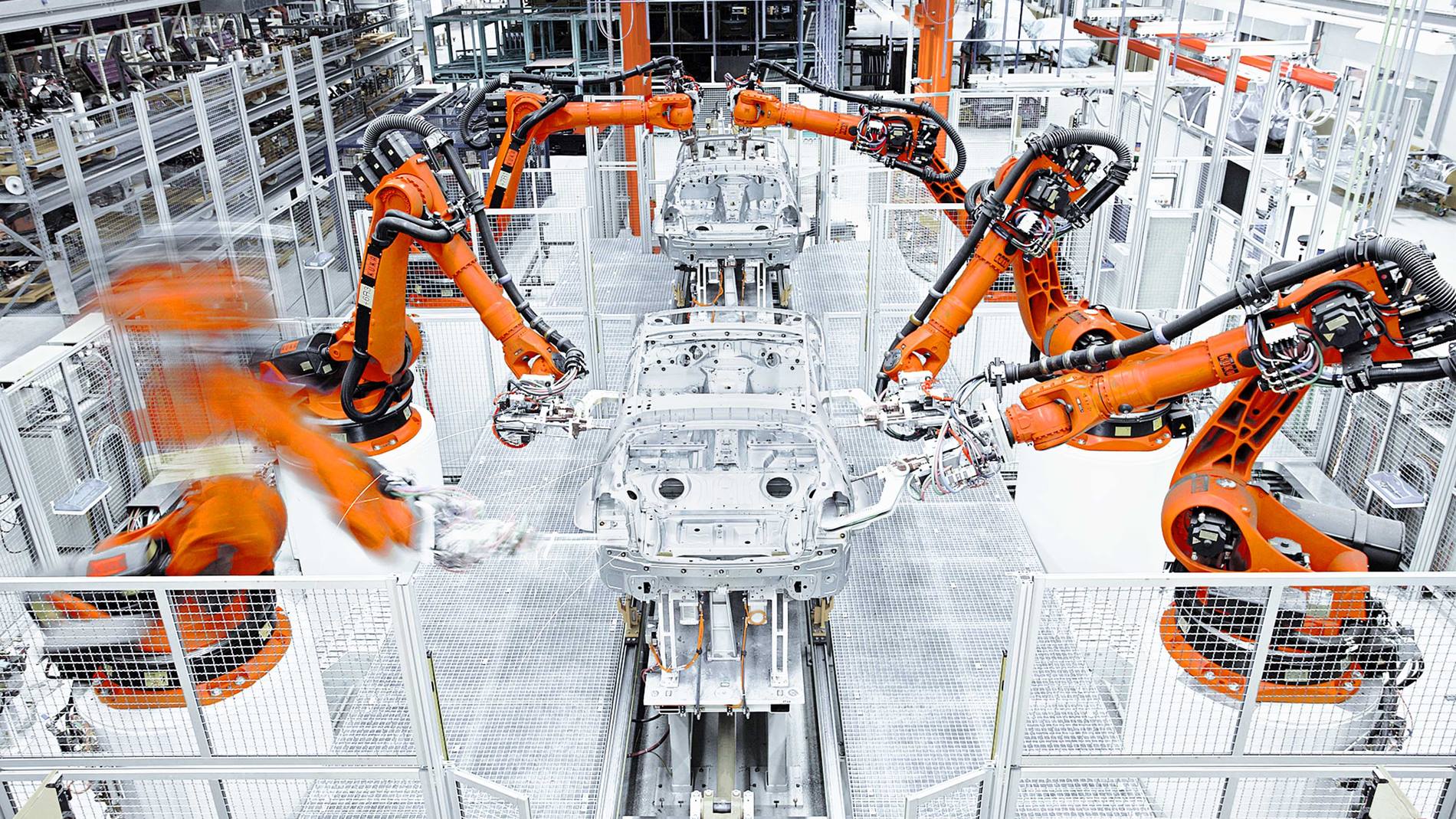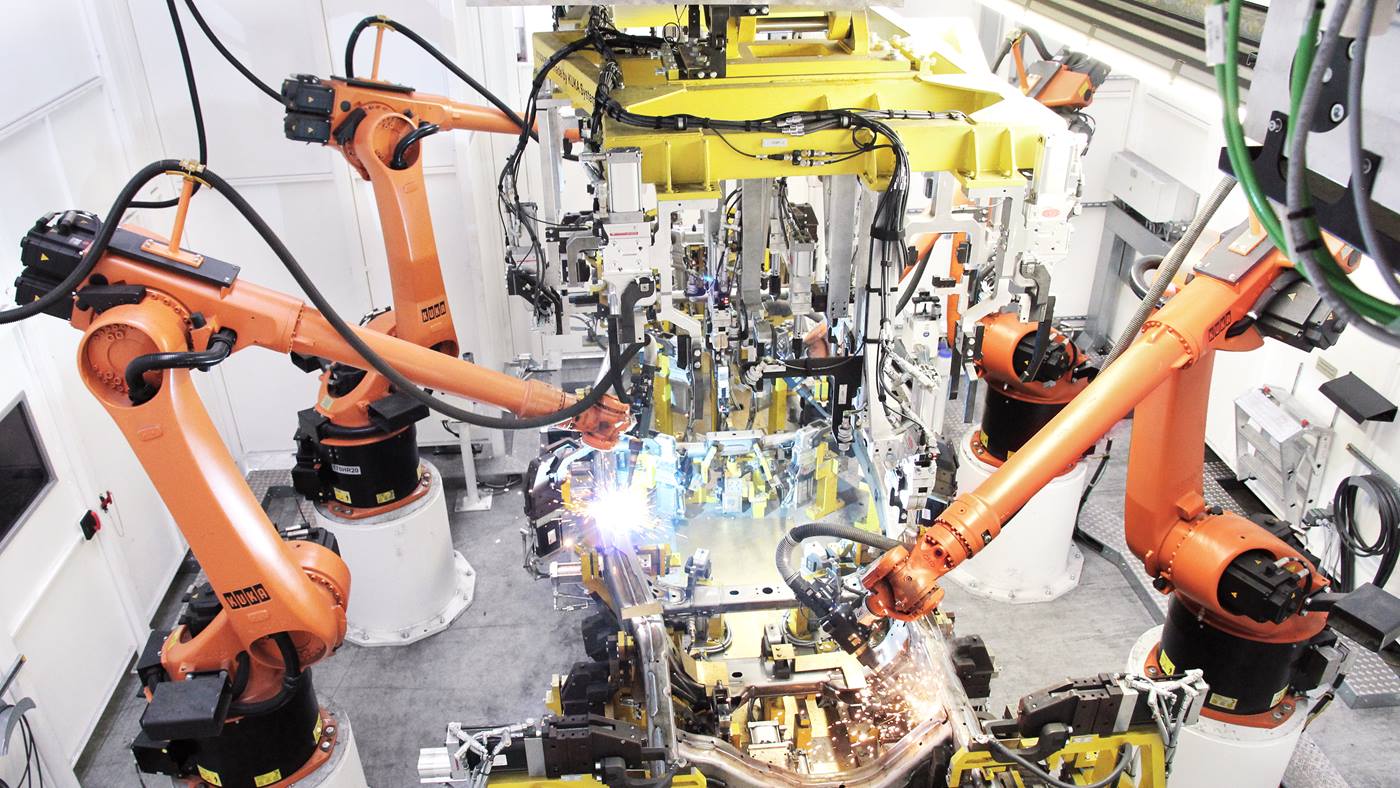Can car bodies be produced at high quality and an economic cost? Nobody can pull the wool over our eyes on this question. Since the 1950s we have been a partner to many leading brands as well as smaller and medium-sized manufacturers in the automotive industry. As far back as that time customers found they could rely on our expertise when welding complete bodies. We set new standards with our multispot positioning, the forerunner to today’s robot applications.
Since then we have perfected the art of body-in-white production to an ever greater degree. Nowadays customers throughout the world rely on our flexible technology packages which can be tailored optimally to the job in hand: for automated and scalable production systems right through to individually configured production cells.
Energy efficiency in body-in-white production
KUKA works with partners in the automotive industry to create solutions which systematically save energy in the production process – including measures to minimize the energy consumption during standstill times.
Today, improvements in the robots used for classic techniques of body-in-white production lead to a more efficient use of resources. These include for instance reduction in the weight of the robot, optimized path planning and energy-efficient motors which allow the system to be operated with optimized resource consumption throughout its entire service life. The overall effect is lower consumption of electricity and hence lower CO2 emissions.
In addition, our simulation tools permit virtual modeling of the energy consumption of the entire production plant. This allows us to offer our customers sustainable alternative concepts.
Joining technologies used by KUKA
The individual pressed parts are joined together in geometrical fixtures, using various techniques:
Body-in-white production: Underbody
The underbody constitutes the base structure for all assembly parts such as the engine and chassis. KUKA offers special joining solutions for all the main assemblies and subassemblies: Front floor, middle floor, rear floor, complete underbody assembly
Technologies: predominantly spot welding and adhesive bonding.
Body-in-white production: Configuration
The appropriate joining technology must be selected for assembling the car body. KUKA knows this process and the advantages of the individual technologies better than anyone else. Systems from KUKA create top quality assemblies
Technologies: predominantly spot welding, adhesive bonding and laser brazing.
Body-in-white production: Add-on parts
Doors, hoods, fenders or tailgates are visible (class A-) add-on parts which the end customer will handle directly. This means they are highly demanding elements in terms of quality. KUKA delivers high-quality processing by means of appropriate solutions.
Technologies: predominantly spot welding, hemming and high-quality laser joining technologies
Special system elements in car body production
Do you wish to remain as flexible as possible? Do you wish to produce many different models on a single line while maintaining the highest possible quality? We can offer all the right system elements for your production environment:
- KS Framer: During body framing, the roof and side walls are attached to the underbody. This geometry station is critical, since it is here that the ultimate shape of the vehicle is defined. The KUKA KS framer can produce up to six different models – a decisive unique selling point.
- KS PULSE: This flexible transport system allows movement of individual parts of the vehicle from one workstation to another. Thus up to four different bodywork designs can be produced on a single system.
- Hemming technology: A neat finish is particularly important for visible parts such as doors and add-on parts. KUKA has developed its own concepts and applications, designed to offer particular flexibility, for roller hemming of parts of the body-in-white. These include hemming systems for sunroofs and wheelarches.
- Matrix body shop: The most flexible solution for car body production, where the joining process operates independently of the component supply. This overall system permits production of an infinite number of possible derivatives.


